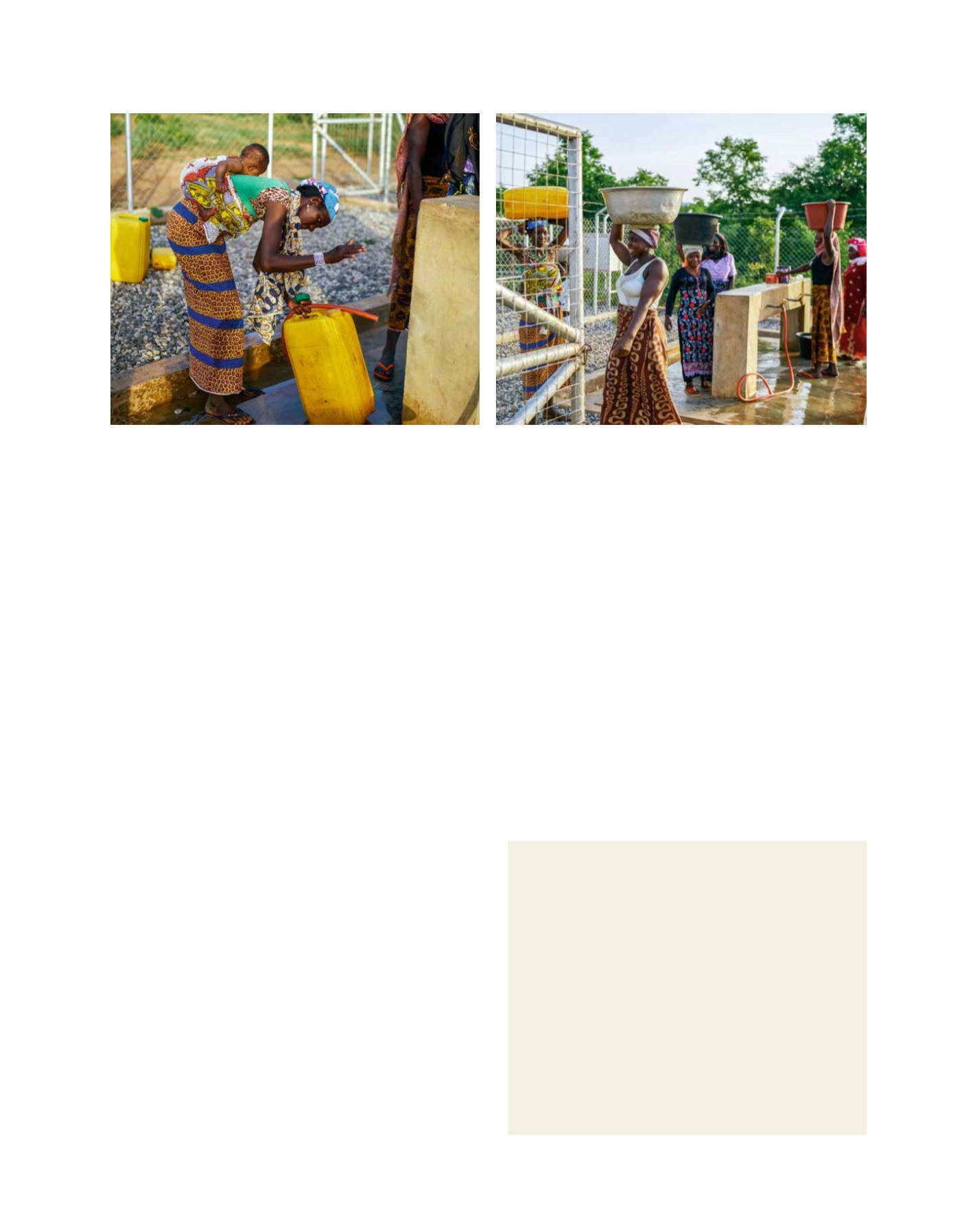

[
] 84
women. For instance, between 2002 and 2012, AfDB financed
over 90 microfinance projects worth over US$400 million, of
which the lion’s share was dedicated to women.
6
AfDB interven-
tions also include support for women-owned small and medium
enterprises which most often takes the form of lines of credit to
financial institutions for on-lending to eligible enterprises.
A review of the AfDB Gender Equality Index summarized
performance of the 54 African countries during the period
2011-2015 revealed that while access to a loan from a financial
institution for women of 15 years old and above is highest
in West Africa, loan access is not negligible in Northern and
Eastern Africa where it is the lowest. An important caveat to
these survey results is that access to a loan does not necessar-
ily imply the ability nor the capacity wherewithal (contract
negotiation, financial knowledge, collateral and so on) that
are required to approach a formal financial institution for a
loan for personal or business purposes. This is further proved
by the Global Findex which reveals that women are less likely
than men to have a formal bank account,
7
which is the first
step to applying for a loan from a financial institution.
An FSD Africa study in Mozambique concluded that
women’s levels of education and product awareness are lower
than men’s (33 per cent) and women are less likely to turn
to banks for financial advice than men. Additionally, they are
less aware of the advantages of having a bank account, less
likely to know or visit financial services access points and less
likely to have either identity documents or proof of residen-
tial address.
8
In Mauritius, Zambia, Tanzania and Zimbabwe,
females report inability to maintain the minimum balance as a
barrier to having a bank account.
9
One can safely deduct that
the root cause of women’s economic empowerment is zero
or low starting capital/finances and wealth. These findings
collectively point to the need for the AfDB, national govern-
ments, regional bodies, the private sector and the development
community to adopt initiatives that will strategically address
the root causes of women’s poverty in Africa.
Cognizant of the need for more catalytic action and more
targeted interventions to address economic empower-
ment of women in Africa, the bank launched its Gender
Strategy, themed ‘Investing in Gender Equality for Africa’s
Transformation’, in 2014. The bank has since adopted a holis-
tic multisectoral approach to enhancing women’s economic
empowerment to level the playing field for men and women for
opportunities to engage in economic activities and earn income.
Five strategic areas of engagement
10
have been identified in
promoting women’s economic empowerment. The Gender
Strategy focuses on three pillars – legal status and property
rights; economic empowerment; and knowledge management
and capacity building.
Institutionally, AfDB also adopted its ‘High Five’ priorities
in September 2015: Light up and power Africa; Feed Africa;
Industrialize Africa; Integrate Africa; and Improve the quality
of life for the people of Africa. These five priorities link directly
with the Gender Strategy’s implementation approaches and
the United Nations Sustainable Development Goals. Given
that agriculture is the mainstay of women’s incomes in Africa,
initiatives particularly address constraints faced by women in
Côte d’Ivoire: Emerging from Conflict
The focus of Emerging from Conflict, a gender-based component
of a multisector support project, was to provide services to and
empowerment of victims of gender-based-violence during the period
December 2007 to December 2012. This project was launched after
the political crisis in Côte d’Ivoire in 2001 that saw gender-based
violence grow to affect 67 per cent of women. The project specifically
established integrated service centres for medical, psychosocial,
economic, legal and judiciary services for gender-based violence
survivors. It also established income-generating projects for women’s
associations where gender-based violence victims were encouraged to
join, empowering them economically and limiting the harm caused by
isolation and social stigma. To ensure continuity, the project trained six
non-governmental organizations (AWECO; l’Organisation Nationale pour
l’Enfant, la Femme et la Famille; l’Organisation pour le Développement
des Activités des Femmes; Cases; Horizon Vert; and Organisation pour
les Droits et la Solidarité en Afrique). The project was declared winner of
the United States Treasury Development Impact Honors in 2013.
Ghana: sheltered stalls with water supply and sanitary facilities are generating positive impacts for women
Images: AfDB
A B
etter
W
orld
















